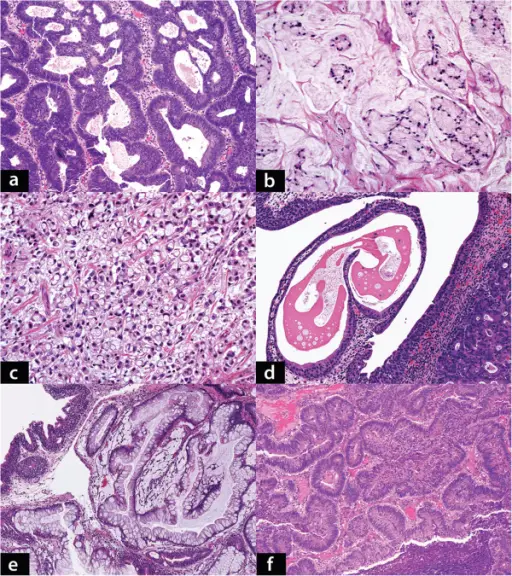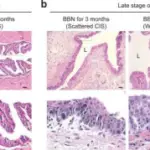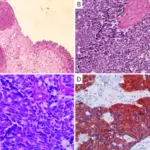Adenocarcinoma of the bladder is carcinoma derived from the urothelium and showing pure glandular differentiation, not including urachal adenocarcinoma or urothelial carcinoma with glandular differentiation.
What is the Pathology of Adenocarcinoma of the Bladder?
The pathology of adenocarcinoma of the bladder is:
-Etiology: The causes of adenocarcinoma of the bladder is the progression of extensive intestinal metaplasia (cystitis glandularis) or villous adenoma.
-Genes involved: TP53, KRAS, PIK3CA, CTNNB1, APC, and the promoter of TERT.
-Pathogenesis: The sequence of events that lead to adenocarcinoma of the bladder is the metaplasia of the urinary bladder induced by chronic irritation or infection that can lead to adenocarcinoma.
-Morphology: The morphology associated with adenocarcinoma of the bladder shows 67% are solitary lesions (while urothelial carcinoma tends to be multifocal), tumor surface may be covered by gelatinous material, papillary, nodular, flat, or ulcerated.
-Histology: The histology associated with adenocarcinoma of the bladder shows nests of neoplastic cells floating in abundant extravasated mucin.
How does Adenocarcinoma of the Bladder Present?
Patients with adenocarcinoma of the bladder typically affect males more than females at 68 years of age. The symptoms, features, and clinical findings associated with adenocarcinoma of the bladder include hematuria, rarely with mucusuria, dysuria. Patients are older and mucusuria is more common than in urachal adenocarcinoma.
How is Adenocarcinoma of the Bladder Diagnosed?
Adenocarcinoma of the bladder is diagnosed by urine cytology, CT, MRI, and biopsy.
How is Adenocarcinoma of the Bladder Treated?
Adenocarcinoma of the bladder is treated by radical cystectomy and pelvic lymph node dissection.
What is the Prognosis of Adenocarcinoma of the Bladder?
The prognosis of adenocarcinoma of the bladder variable.



